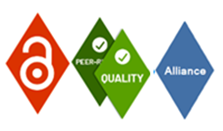An exploratory study on the LGBT community of Kolkata
Keywords:
Adjustment level of the respondents, Homosexuality, Professional social work, Positive roles of NGOs, Section 377Abstract
The emergence of LGBT activism is seen in terms of the emergence of new sexual orientation and identities which were earlier not so much highlighted due to the traditionalistic and rigid attitude of the heterosexual norms and values. Though in western countries, the debate and discussion regarding the issue to homosexuality was started sometime early, but there is a long way left for India. Very recently, due to the emergence of certain active NGOs, the spread of LGBT movement was noticed in the country. The purpose of the present paper was to highlight the socio-economic conditions of the homosexuals (Gay and Lesbians) in Kolkata and their perception about the issue of homosexuality. The researcher deliberately restricted her study among male and female homosexuals’ only keeping time and place constraint in mind. Role of Professional social work practice was also discussed while concluding the study findings.
References
'A ruling against discrimination'. (2009). Economic and political weekly , 44 (28), 5.
Altman, D. (1996). 'Rupture or continuity? The internalization of gay identities'. Social Text , 14 (3), 77-94.
Bacchetta, P. (1999). 'New Campaign for lesbian rights in India'. Off our backs , 29 (4), 6.
Balasubrahmanyan, V. (1996). 'Gay Rights in India'. Economic and political weekly , 31 (5), 257-258.
Bersnstein, M., Anna-Maria, M., & Scott, B. (2009). 'The challenge of law: Sexula orientation, gender identity and social movements'. In M. Bersnstein, M. Anna-Maria, & B. Scott (Eds.), "Queer mobilization: GLBT activists confront the law" (pp. 1-20). New York: New York University Press.
Bhan, G. (2005). 'Challenging the limits of law: Queer politics and legal reform in India'. In A. Narrain, & G. Bhan (Eds.), "Because I have a voice: Queer politics in India" (pp. 40-48). New Delhi: YODA Press.
Bhaskaran, S. (2004). 'Made in India: Decolonization, queer sexualities, trans/national projects'. London: Palgrave Macmillan.
Dave, N. N. (2010). 'To render real the imagined: An ethnographis history of lesbian community in India'. Signs , 35 (3), 595-619.
Gupta, A. (2006). 'Section 377 and the dignity of Indian homosexuals'. Economic and political weekly , 41 (46), 4815-4823.
Kannabiran, K. (2012). 'Tools of justice: Non-discrimination and the Indian Constitution'. New Delhi: Routledge.
Martin, J. (1995). 'Gay and lesbian faculty in social work: Roles and responsibilities'. Journal of Gay and Lesbian Social Services , 3 (4), 1-11.
Morrow, D. (1996). 'Heterosexism: Hidden discrimination in Social Work education'. Journal of Gay and Lesbian Social Services , 5 (4), 1-16.
Newman, P., Daley, A., & Bogo, M. (2009). 'Breaking the silence: Sexual orientation in Social Work field education'. Journal of Social Work Education , 45, 7-27.
Parthasarathy, S. (2014, January 01). And justice for none: The anti-democratic Supreme Court ruling on Section 377. Retrieved May 16, 2014, from www.caravanmagazine.in: http://www.caravanmagazine.in/perspective/and-justice-none#sthash.NXbh62rw.dpuf
Sharma, M. (2006). 'Loving women: Being lesbian in unpriviledged India'. New Delhi: YODA Press.
Srivastava, S. S. (2014). "Disciplining the 'Desire': 'Straight' State and LGBT Activism in India". Sociological Bulletin- Journal of the Indian Sociological Society , 63 (3), 368-385.
Web-links: http://www.jstor.org/stable/585169 https://en.wikipedia.org/wiki/Homosexuality_in_India
Downloads
Published
How to Cite
Issue
Section
License

This work is licensed under a Creative Commons Attribution-NonCommercial 4.0 International License.











